Why didn’t we come here sooner? That’s the first thought that comes to mind when you arrive in Gdańsk. Some streets look straight out of Harry Potter, while modern areas exude Nordic minimalism and cleanliness, and then there are the beautiful historic painted houses that will stop any photographer.
But Gdańsk is not just another pretty port city on the map of Europe. It’s a place where World War II began, where the Solidarity movement was born, and where the communist regime began to crumble under the pressure of ordinary people.
This northern Polish city, located at the mouth of the Vistula River into the Baltic Sea, combines several identities – a Hanseatic trading center, a royal Polish city, a former free city, and a working-class port. The historic center with its brick Gothic and Renaissance houses looks like something out of a fairytale, yet most of the buildings were meticulously reconstructed after the devastating bombing during World War II.
Today, Gdańsk, along with modern Gdynia and the spa town of Sopot, forms the dynamic Tricity, which offers a perfect mix of historical sights, cultural experiences, seaside relaxation, and excellent food.
In this comprehensive guide, I will share with you Gdańsk, Poland: 35 Best Things to Do and See in this remarkable city that perfectly combines history, culture, and seaside charm.
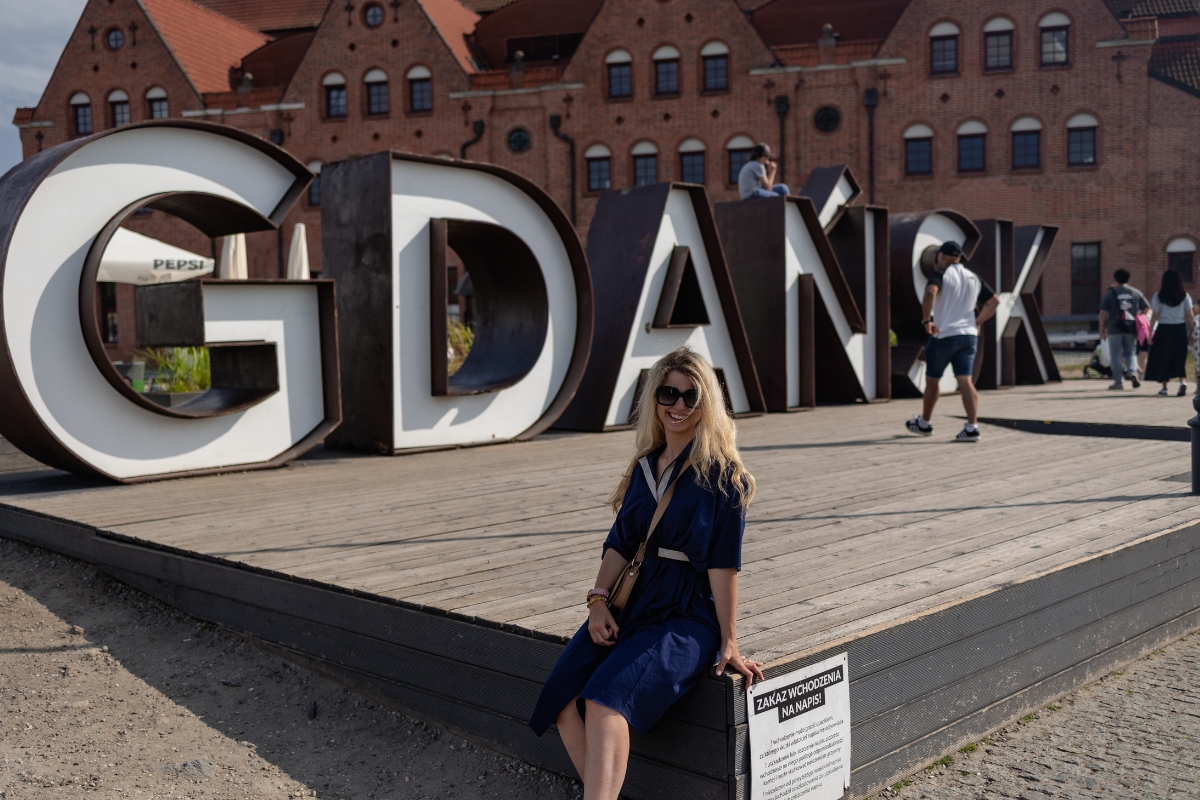
TL;DR
- Best time to visit: May-September (summer for beaches, spring/autumn for sights without crowds)
- Transport from the Czech Republic: Direct flights with Ryanair from Prague (from 500 CZK), Flixbus from Ostrava/Brno (10-12h)
- Public Transport: Trams and buses (4.80 PLN single ticket, 22 PLN day ticket)
- Accommodation Tips: Mercure Gdańsk Stare Miasto or Radisson Blu Hotel
- Points of Interest: Długa Street with colorful houses, St. Mary’s Basilica (world’s largest brick church), Neptune’s Fountain, Mariacka Street with amber shops
- Day Trips: Sopot (20 min. by train) – Europe’s longest wooden pier and beautiful beaches (you can book excursions via GetYourGuide)
- Ideal length of stay: 3-4 days for the city, a week including the surroundings and beaches
🌏 Cestovníček – Dětský průvodce na cesty
Proměňte každou dovolenou v dobrodružství! Cestovníček je zábavný a vzdělávací deník pro děti od 5 do 12 let, který si zamilují na cestách v Česku i v zahraničí.
- 🔹 Zabaví děti při čekání v restauraci, cestování i na hotelu
- 🔹 Podporuje tvořivost a zájem o svět kolem
- 🔹 Uchová vzpomínky z výletů a dovolené
- 🔹 Okamžitý PDF soubor ke stažení po zaplacení
Co v Cestovníčku najdete?
- ✅ Místo pro fotky a zápisky z výletu
- ✅ Hravé úkoly na postřeh a logiku
- ✅ Bludiště, omalovánky, spojovačky
- ✅ Zábavné počítání a kreslení
- ✅ Prostor pro největší zážitky
When to Visit Gdańsk: Weather
The main tourist season in Gdańsk begins with the arrival of warm days, approximately from mid-June to the end of August. During this period, the city offers the most attractions and is at its liveliest. Numerous festivals, concerts, and outdoor events are held during the summer.
Summer temperatures range around 22-25 °C, which is ideal for exploring the historic center and relaxing on the Baltic Sea beaches.
If you prefer a quieter atmosphere without tourist crowds, consider visiting during these periods:
September to early November: Most seasonal attractions are still available at least until the end of September, some until early November. During this period, souvenir stalls and seasonal businesses gradually close.
Late April to June: Temperatures reach a pleasant 14-22 °C, and most tourist attractions are already open. The city starts to come alive, but the crowds are not as large as in the high season.
💡TIP: Visit the Hel Peninsula
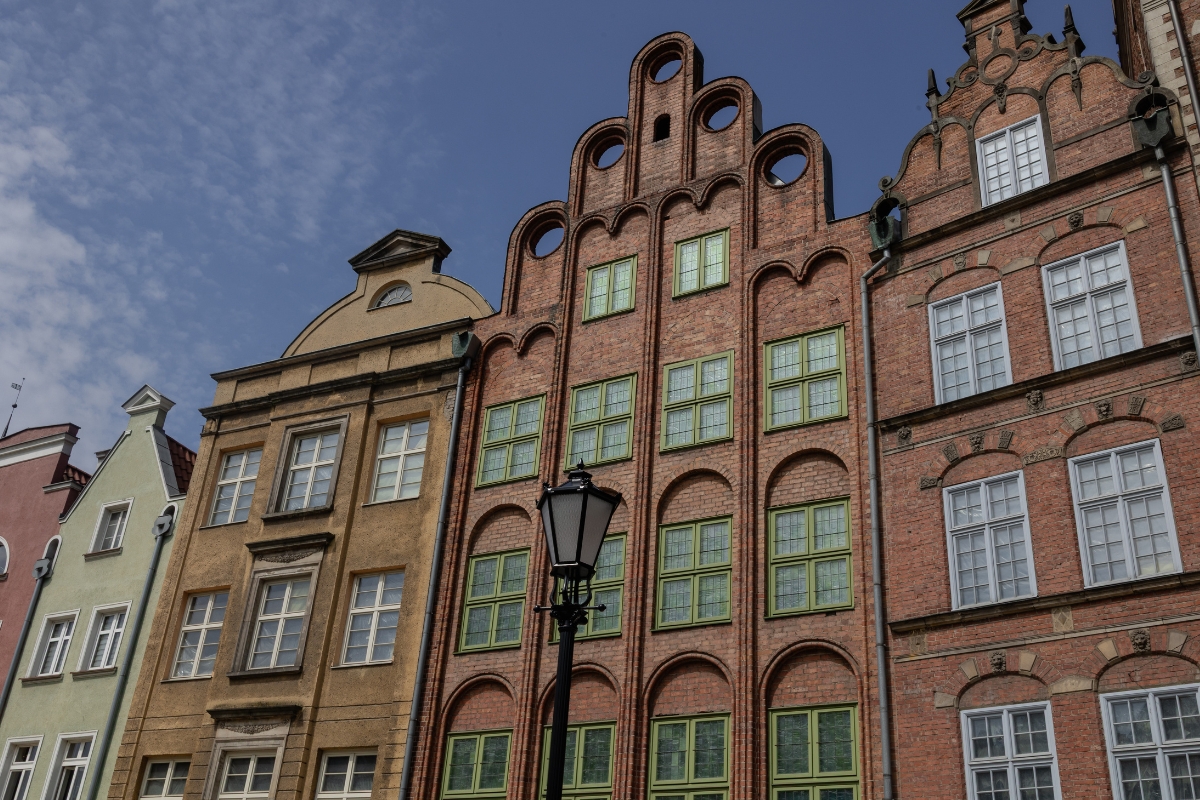
Where to Stay in Gdańsk
Wondering where to stay in Gdańsk? We have several tips for you, for every budget.
City Center (Old Town)
For your first visit to Gdańsk, it’s ideal to stay directly in the historic center or its vicinity. You’ll have all the main sights within easy reach and will appreciate the atmosphere of the ancient streets, even in the evening.
Luxury hotels:
- Radisson Blu Hotel – right by the Motława River with views of the historic center
- Hotel Gdańsk Boutique – an elegant hotel in the port district
Mid-range options:
- Mercure Gdańsk Stare Miasto – a reliable chain hotel near the Old Town
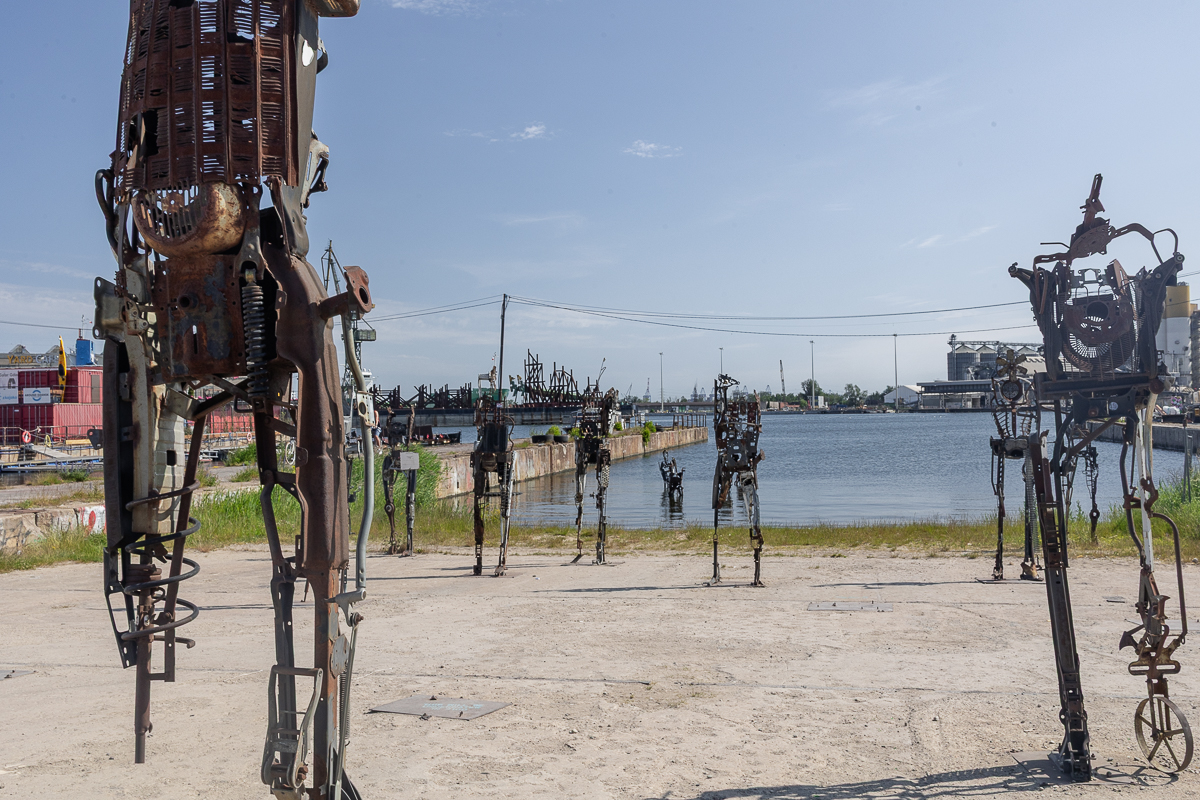
For budget travelers:
- Olympic – old town – a clean, pleasant hostel where you pay from 130 PLN per night with breakfast
- Trip Hostel – a modern hostel a short walk from the center with access to a shared kitchen
If you’re looking for accommodation further away from the tourist hustle and bustle, consider districts like Wrzeszcz or Oliwa. They are well-connected to the city center by public transport and offer a quieter environment.
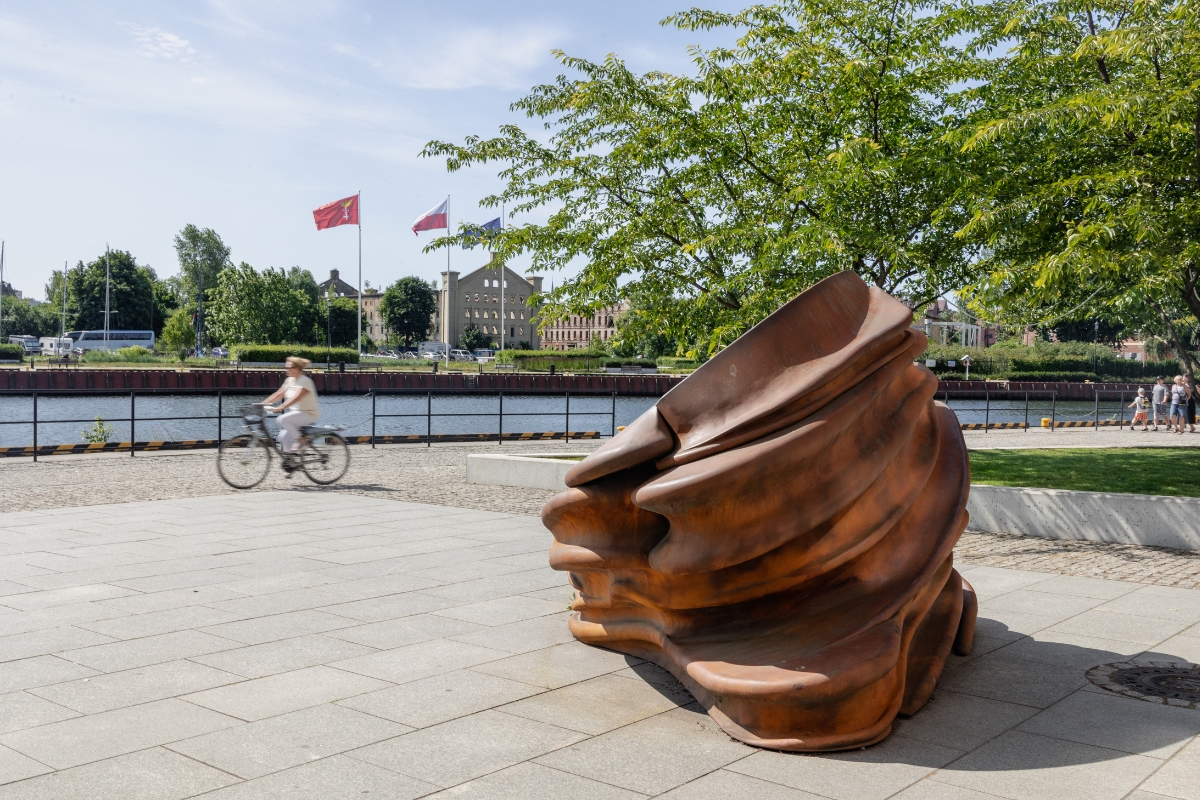
💡Read also: All about traveling to Poland by car
Gdańsk, Poland: 35 Best Things to Do and See
If you’re heading to Gdańsk, then we’ve put together 35 tips on what to see and do there. And we also have tips for you on what to do with kids.
Długa Street (Długa) and Long Market (Długi Targ)
The heart of historic Gdańsk is formed by Długa Street and Long Market, lined with magnificent Renaissance and Baroque buildings with richly decorated facades. This pedestrian zone is an ideal place to start exploring the city. Stop by the colorful houses, which are typical for Gdańsk, and soak in its atmosphere. Each house has its own story and original architecture.
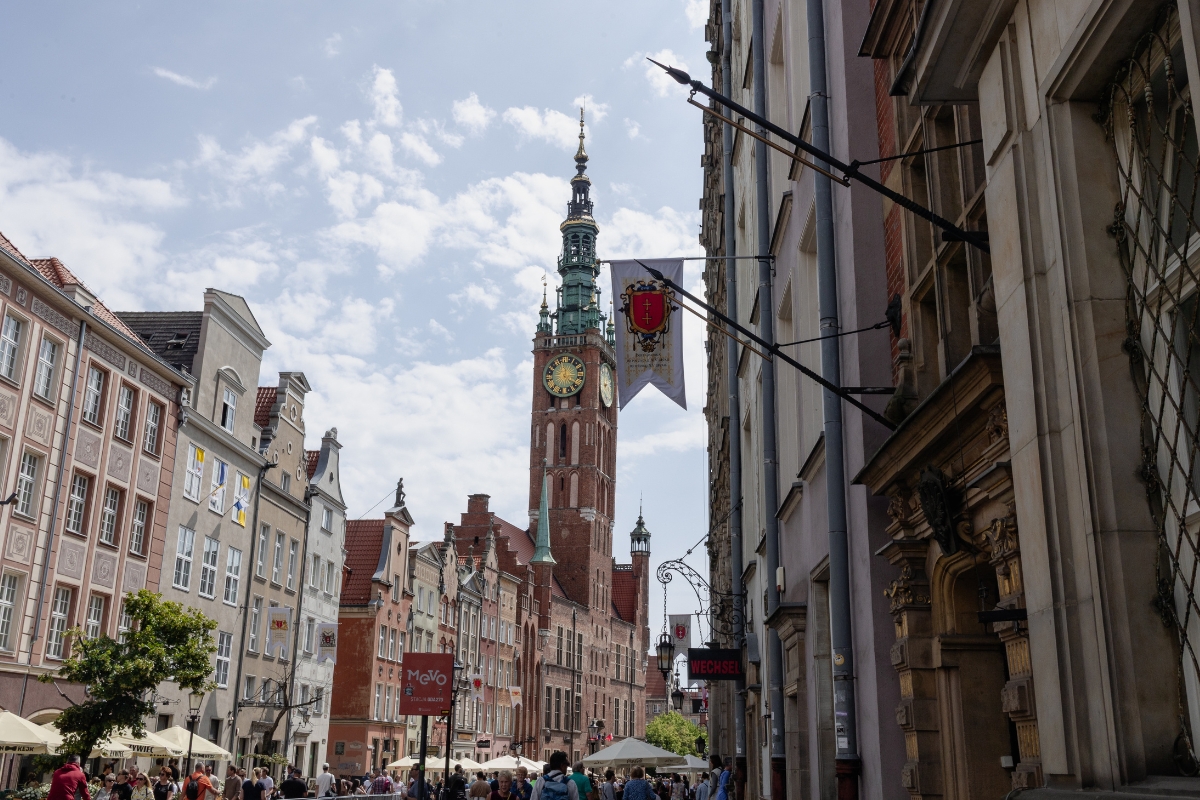
Neptune’s Fountain
The iconic fountain from the early 17th century is a symbol of the city. It is located in the Long Market and depicts the god of the sea, Neptune, with a trident. According to legend, it was Neptune who transformed the local water into the famous Gdańsk Goldwasser vodka with real gold flakes.
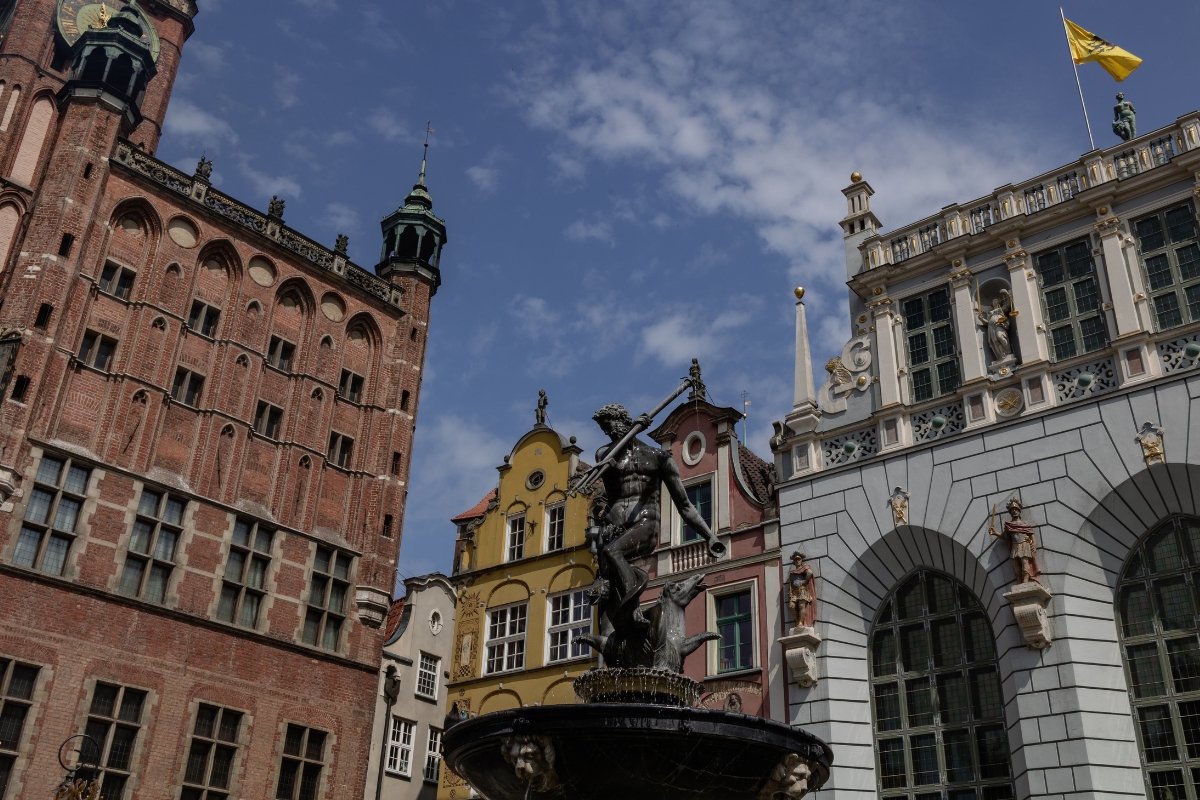
Main Town Hall
The monumental Gothic town hall building with Renaissance elements and an 80-meter-high tower dominates the Long Market. Inside, you’ll find the Historical Museum of the City of Gdańsk with magnificent interiors, among which the Great Council Hall with its magnificent ceiling stands out. From the town hall tower, one of the best views of the city unfolds. Admission to the tower costs 18 PLN.
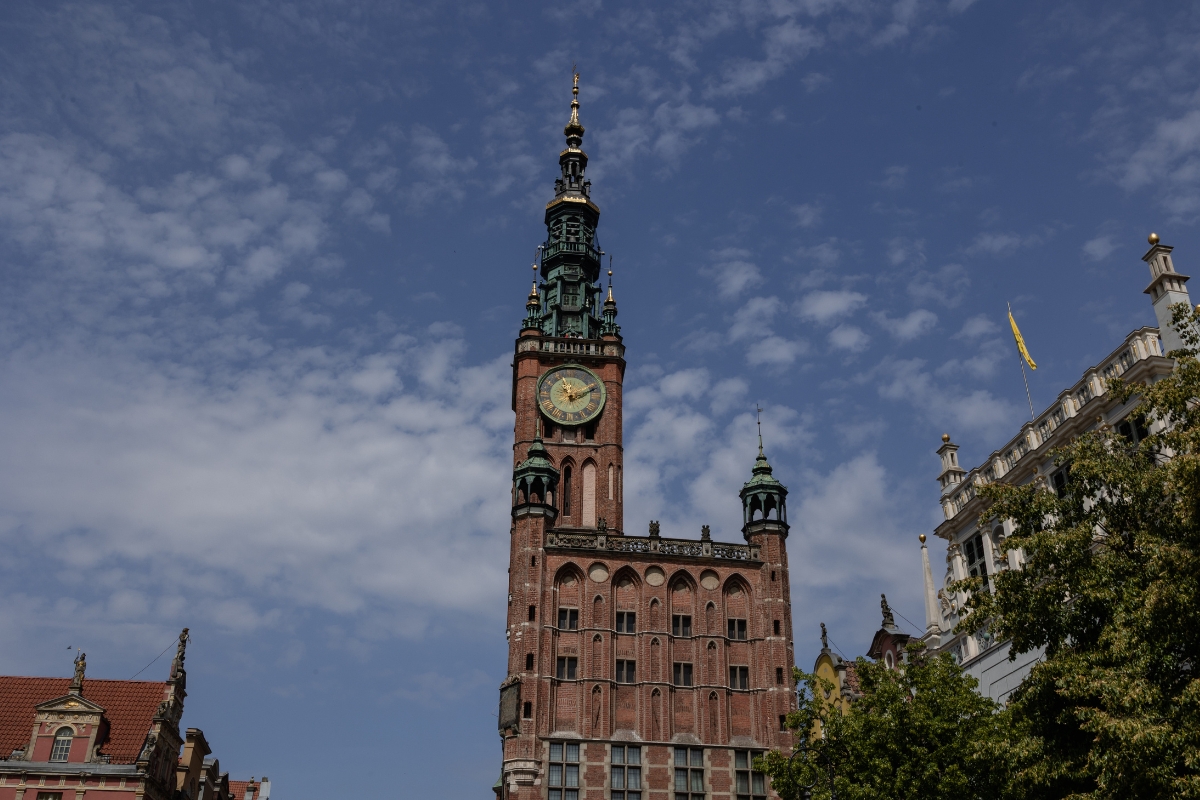
Golden Gate
This impressive Renaissance gate from the early 17th century forms one of the entrances to the historic city center. It was built between 1612-1614 on the site of the original Gothic gate. Its facade is adorned with statues symbolizing the ideal qualities of citizens: Peace, Freedom, Wealth, and Glory. The Golden Gate, along with the Upland Gate and the Green Gate, forms the so-called Royal Route.
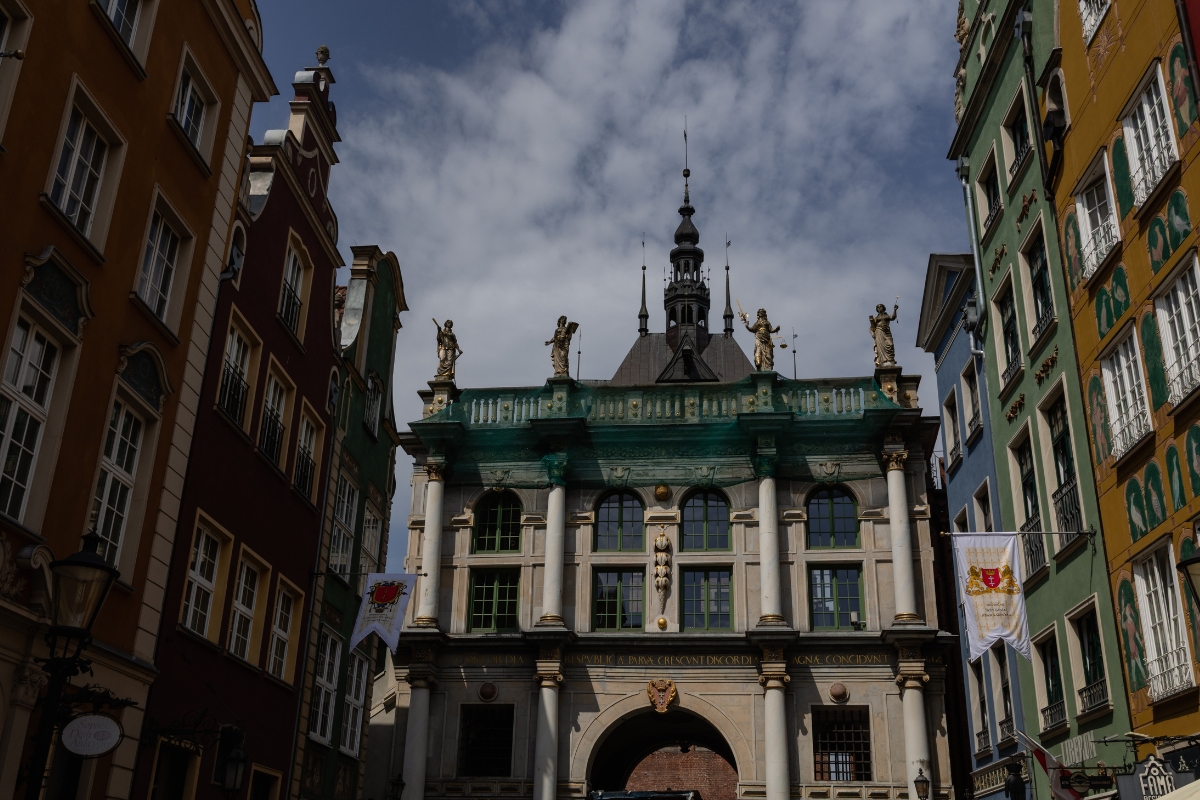
Green Gate
A gate standing at the end of the Long Market, towards the Motława River. The Green Gate was built in the 16th century as the official residence for Polish kings during their visits to the city. Today, it houses part of the National Museum in Gdańsk.
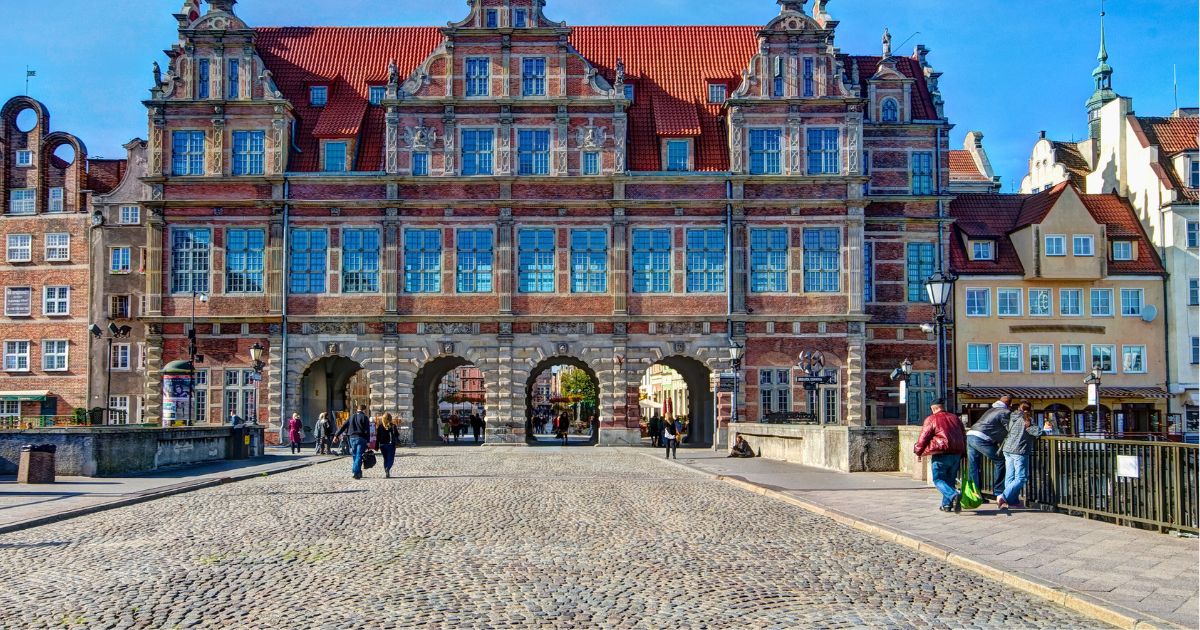
Basilica of the Assumption of the Blessed Virgin Mary
This impressive brick Gothic cathedral is the largest brick church in the world. It can accommodate up to 25,000 people and will captivate you with its majestic size and beautiful interiors. Inside, you’ll find, among other things, a 15th-century astronomical clock and many valuable works of art. Don’t forget to climb the church tower (400 steps), from where you’ll get a breathtaking view of the entire city. Admission to the tower is 16 PLN.
🌏 Cestovníček – Dětský průvodce na cesty
Proměňte každou dovolenou v dobrodružství! Cestovníček je zábavný a vzdělávací deník pro děti od 5 do 12 let, který si zamilují na cestách v Česku i v zahraničí.
- 🔹 Zabaví děti při čekání v restauraci, cestování i na hotelu
- 🔹 Podporuje tvořivost a zájem o svět kolem
- 🔹 Uchová vzpomínky z výletů a dovolené
- 🔹 Okamžitý PDF soubor ke stažení po zaplacení
Co v Cestovníčku najdete?
- ✅ Místo pro fotky a zápisky z výletu
- ✅ Hravé úkoly na postřeh a logiku
- ✅ Bludiště, omalovánky, spojovačky
- ✅ Zábavné počítání a kreslení
- ✅ Prostor pro největší zážitky
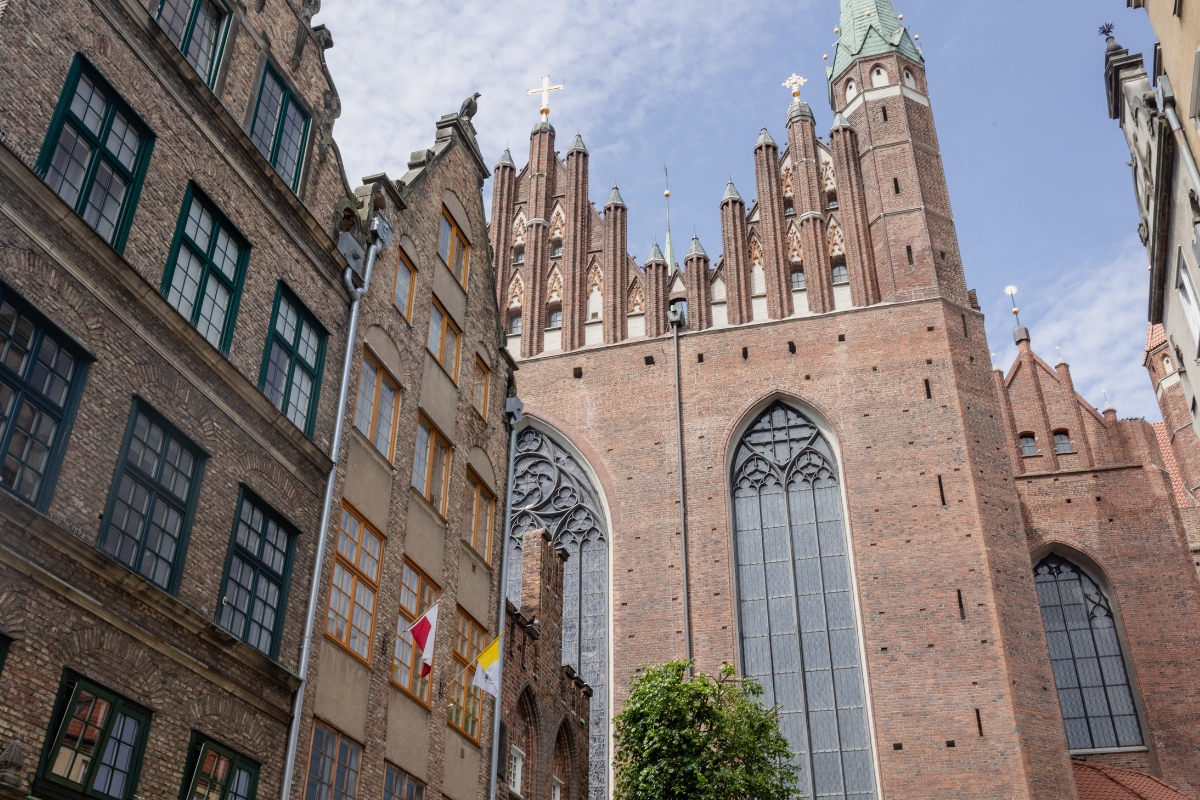
Mariacka Street
One of the most beautiful and photogenic streets in Gdańsk, leading from the embankment to St. Mary’s Basilica. It is lined with magnificent stone houses with decorated terraces and steps. The street is known primarily for its amber shops, which are typical for this region. It’s an ideal place to buy souvenirs or simply for a romantic stroll through the cobblestone streets.
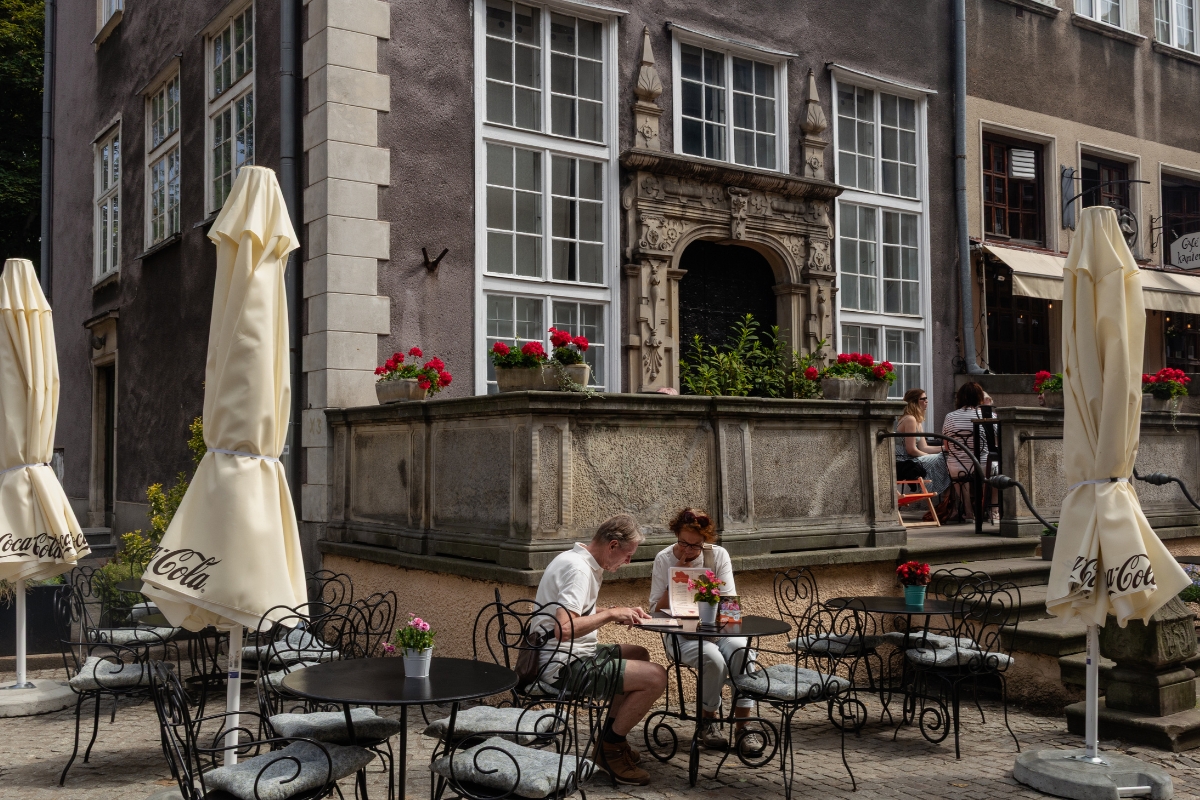
Stary Żuraw (Old Crane)
This medieval crane from the 15th century is a symbol of Gdańsk’s maritime history and one of the city’s most famous landmarks. It was used for loading and unloading goods from ships and for erecting masts. Today, it is part of the National Maritime Museum. This impressive wooden structure is considered one of the oldest surviving cranes in Europe.

Motława River Embankment
The embankment along the Motława River offers magnificent views of the historic buildings and the city. It’s a great place for a stroll, where you can admire traditional Gdańsk architecture from a different perspective. You’ll find a number of cafes and restaurants with outdoor seating, from where you can watch life on the river, including tourist boats.
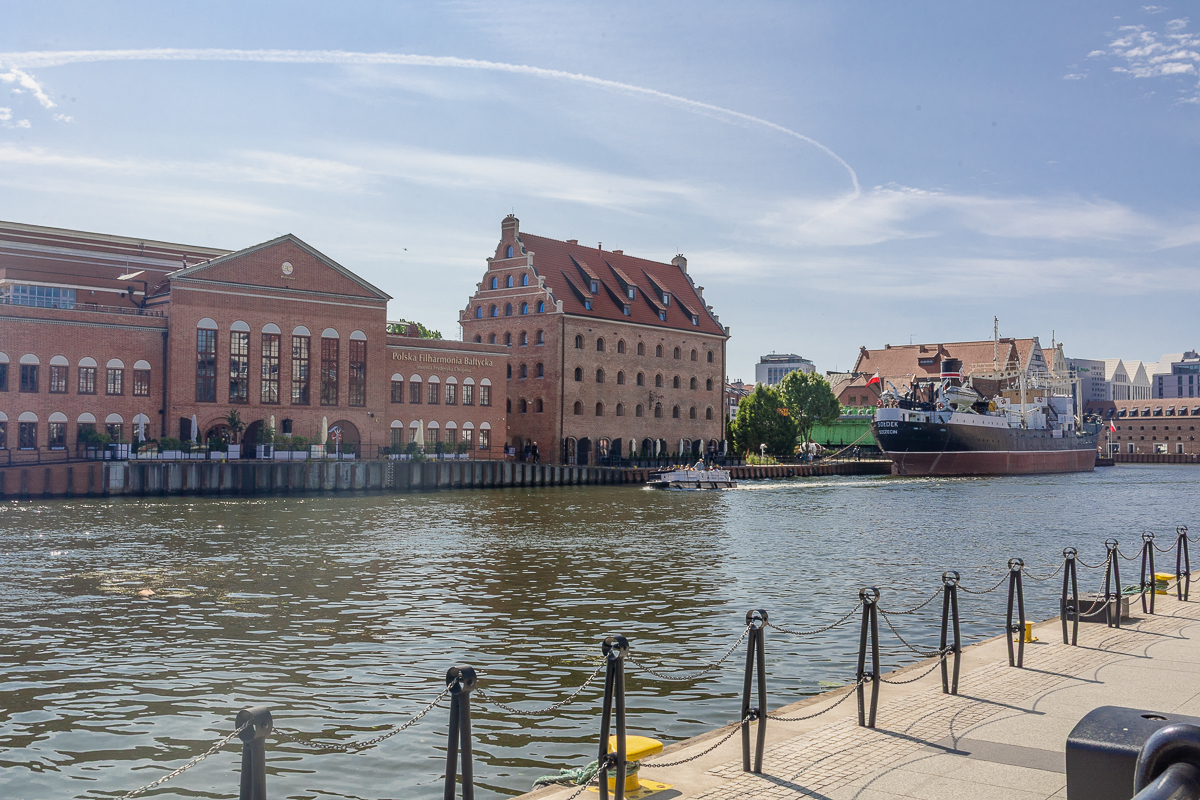
World War II Museum
One of the most modern and impressive museums dedicated to World War II in the world. Opened in 2017, it offers an extensive exhibition that guides you through the entire conflict from both a Polish and global perspective. The museum is designed to fully immerse you – from the architectural design of the building to the interactive exhibits. Admission costs 29 PLN and it is recommended to purchase tickets online.

European Solidarity Centre
A museum dedicated to the Solidarity movement, which played a major role in the fall of communism in Eastern Europe. The modern building, designed to resemble a ship’s hull, houses interactive exhibits mapping the Poles’ struggle for freedom. Admission is 35 PLN and it is open daily during the season.
Westerplatte
A historic peninsula where World War II began on September 1, 1939, with a German attack on a Polish military base. Today, there is a memorial and an open-air museum here, commemorating these tragic events. You can get to Westerplatte by bus (lines 106, 138, or 606) or by tourist boat from the city center.
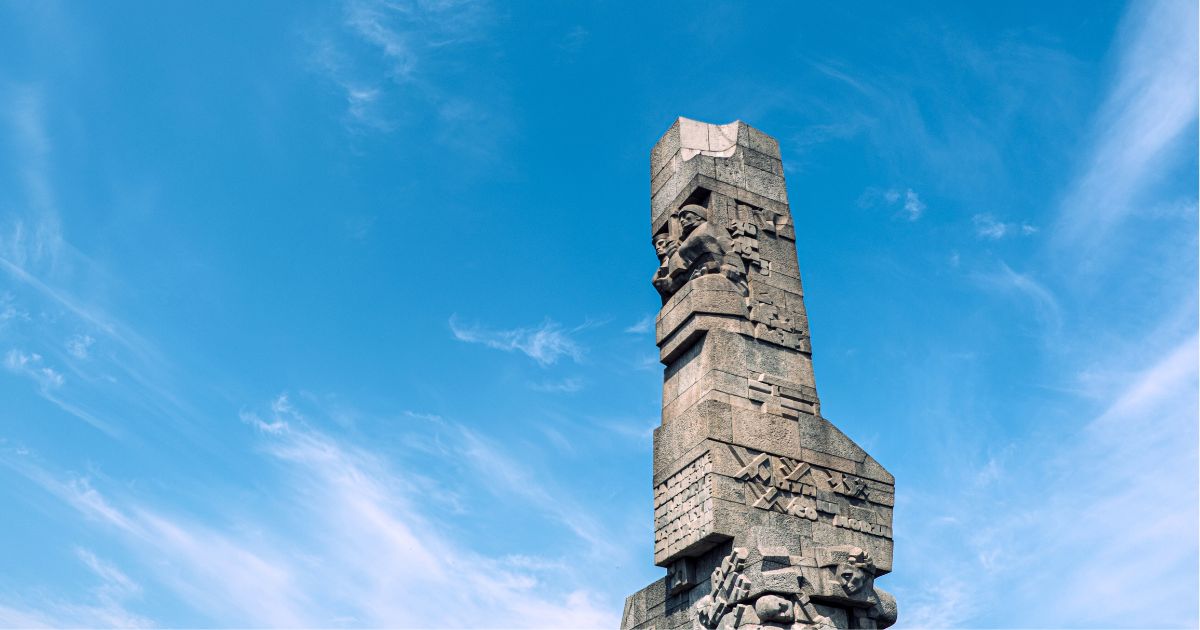
Oliwa Cathedral
This impressive 12th-century cathedral is located in the northern part of Gdańsk, in the Oliwa district. It is known primarily for its monumental 18th-century organ, which is among the largest in Poland. Organ concerts are regularly held here, offering an unforgettable musical experience in a magnificent historic setting.
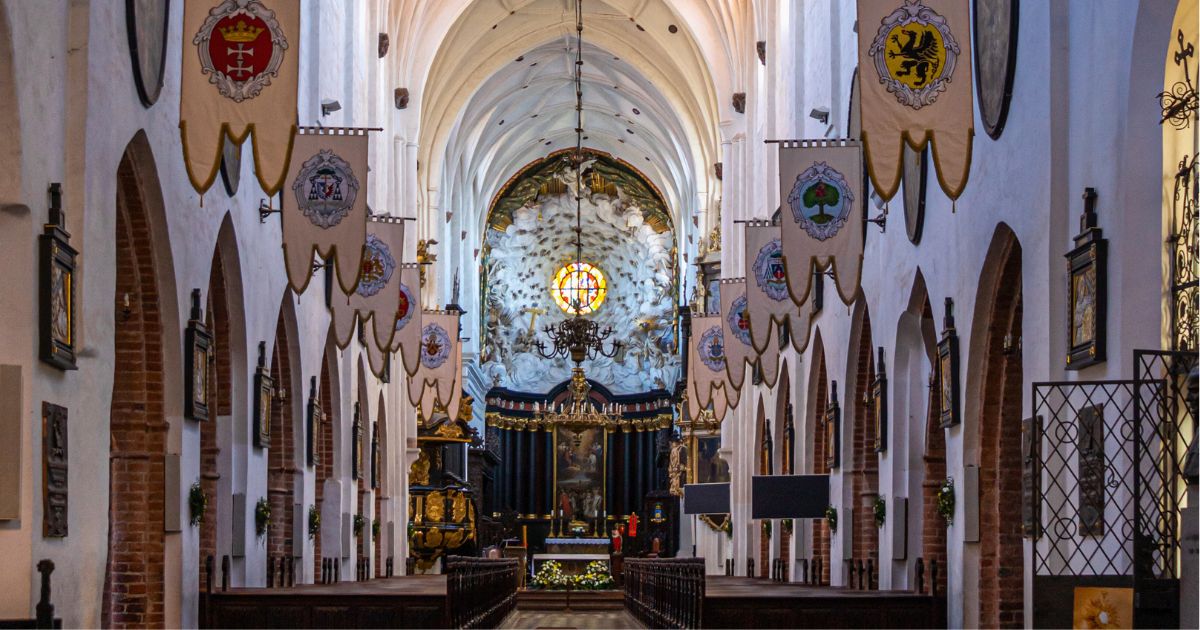
Oliwa Park
The sprawling park near Oliwa Cathedral is an ideal place to relax from the city bustle. It offers beautifully landscaped gardens, ponds, fountains, and a palm greenhouse. The park was founded in the 18th century by monks from the abbey and remains a popular spot for walks and picnics today. In the central part of the park, you’ll find a romantic palace that now serves as a museum.
Royal Chapel
This 17th-century Baroque chapel is located next to St. Mary’s Basilica. It was built as a private prayer chapel for Polish kings and is known for its magnificent frescoes and Baroque decoration. Although smaller than the surrounding Gothic structures, it stands out for its elegance and intricate details.
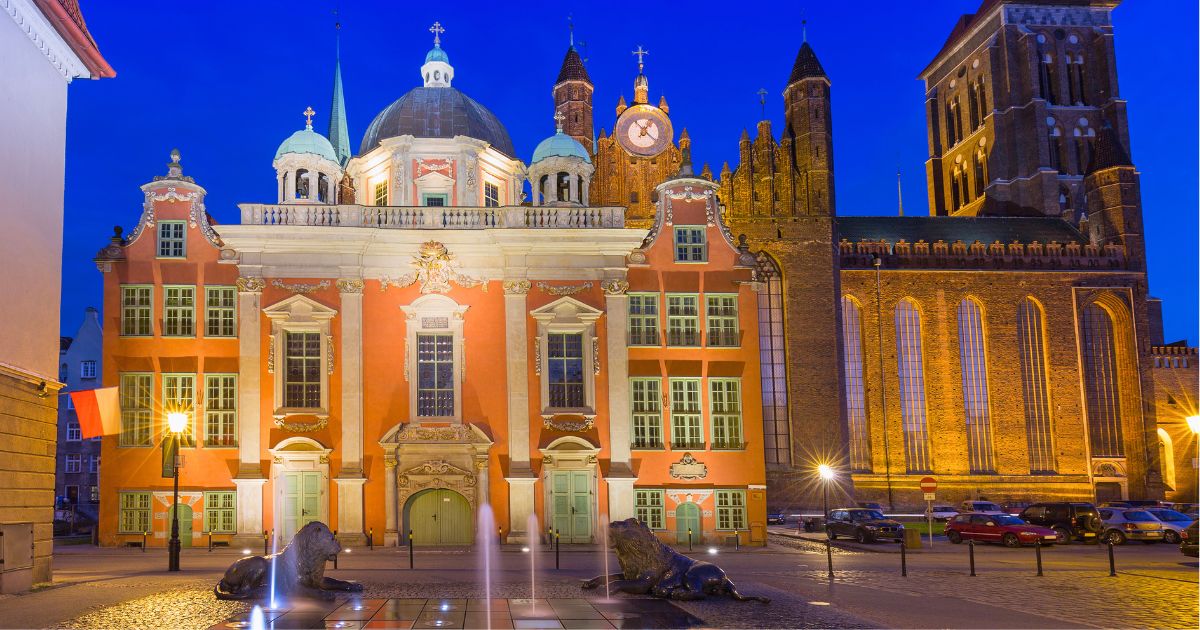
Artus Court
A historic building that once served as a meeting place for merchants and a social center of the city. Today, it is part of the Historical Museum, and inside you can admire its opulent interior with Gothic and Renaissance elements. Particular attention is drawn to the ten-meter-high Renaissance tiled stove from the 16th century. Admission to the museum is 25 PLN, and on Mondays, admission is free.
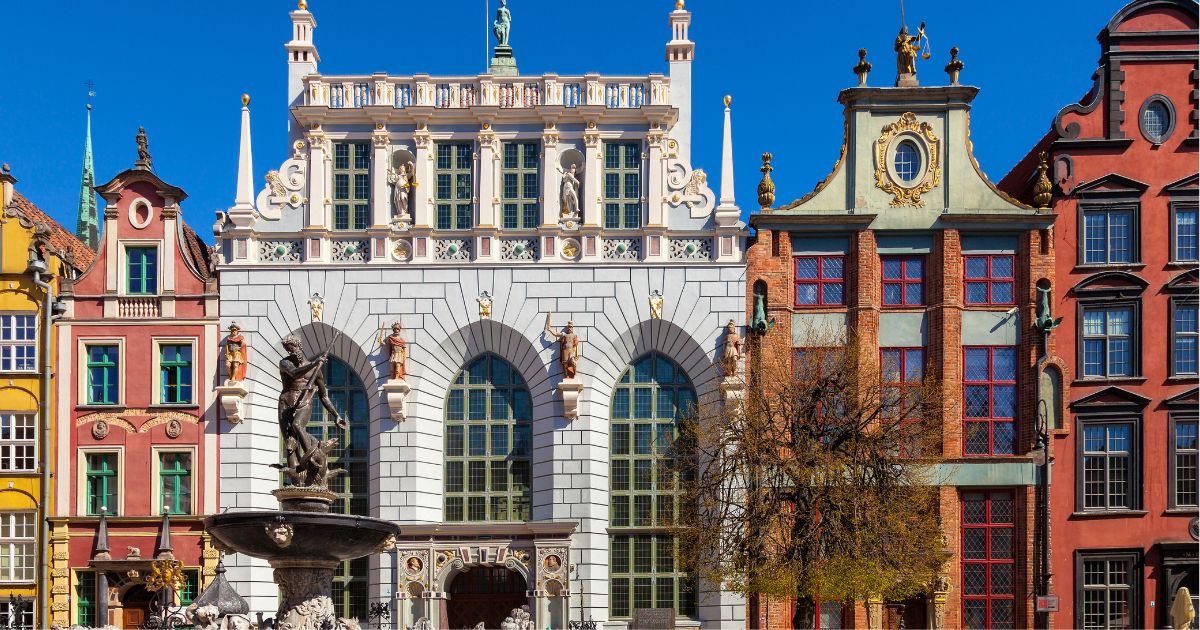
Royal Shipyard
The mysterious industrial environment of the Royal Shipyard, in whose vicinity you’ll find a number of interesting pubs, cafes, a contemporary art museum, and street art exhibitions. I recommend taking a walk here if you want something a little different.
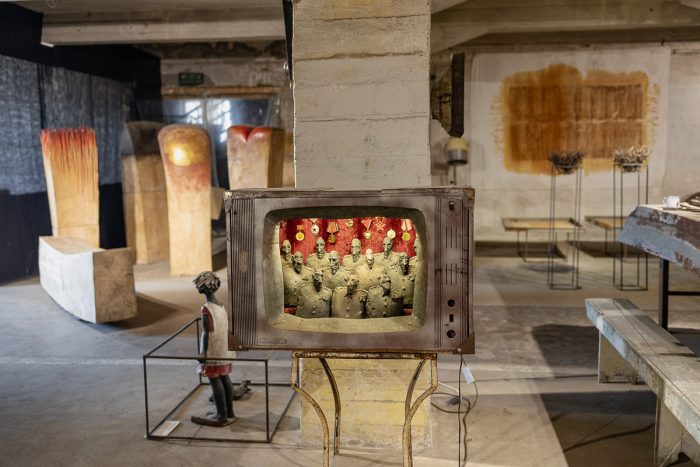
Great Arsenal
A building from the early 17th century that once served as an armory. Its red facade, richly decorated with military motifs and the city’s coat of arms, is a magnificent example of Dutch Renaissance style. Although the building cannot be entered, there is a wine bar in its basement where you can enjoy a glass of good wine.
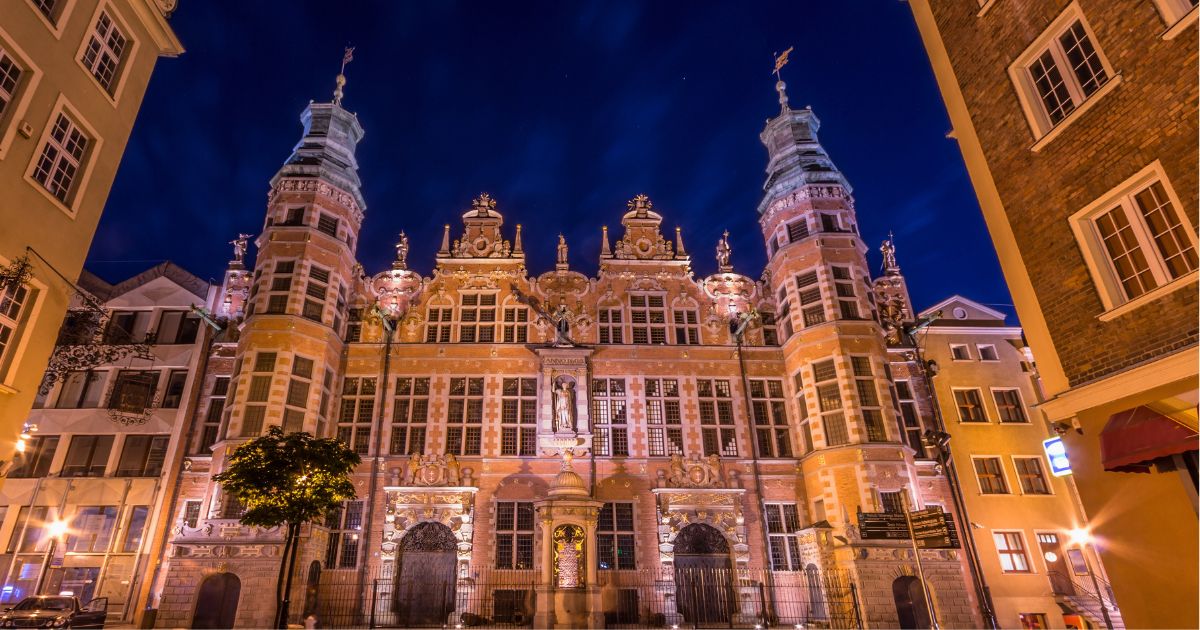
Wisłoujście Fortress
A fortress on the right bank of the Vistula River, which is the only maritime fortress on the southern coast of the Baltic Sea. The core of the fortress is a round brick tower, which was gradually supplemented with other defensive elements. The fortress has an interesting history dating back to the 14th century and is now part of the Historical Museum of Gdańsk.
St. Catherine’s Church
The oldest parish church in Gdańsk, founded already in the 13th century. Although it was damaged by fire in 2006, it was later meticulously reconstructed. From its tower, another beautiful view of the city unfolds. The church also houses a tower clock museum. Admission to the church is free, and climbing the tower costs 10 PLN.
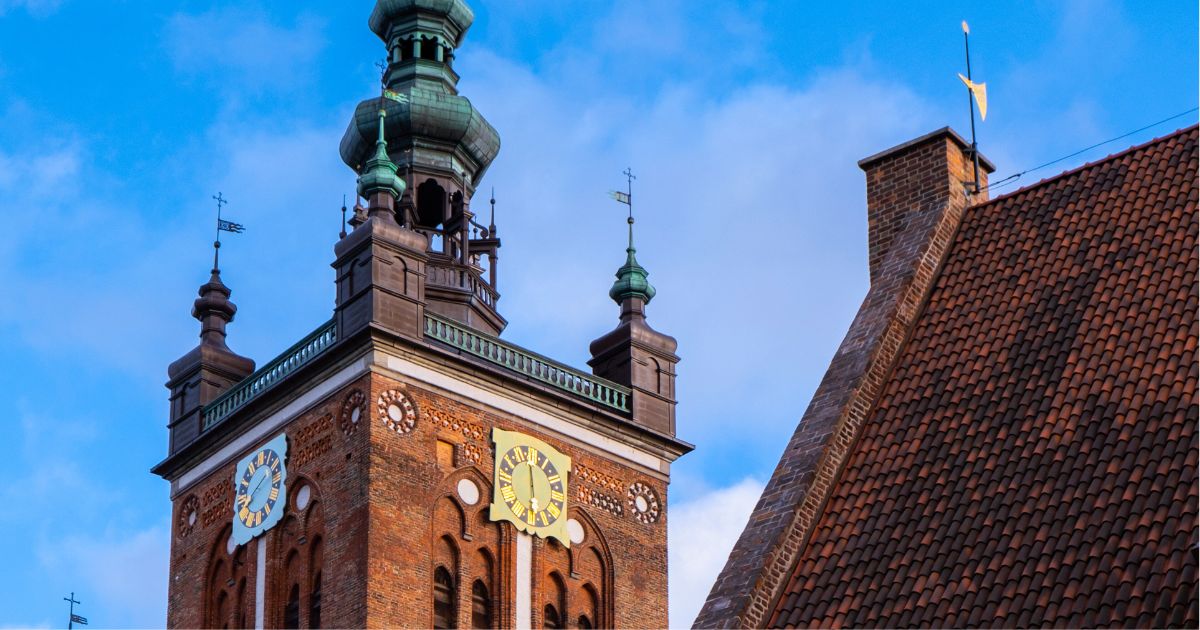
St. Bridget’s Church
This church holds special significance in Poland’s modern history, as it served as a meeting place for members of the Solidarity movement. The church’s interior is adorned with many works of art, including a monumental amber altar, which is considered the largest in the world. The church is freely accessible before 10:00 AM and after 6:00 PM.

National Museum in Gdańsk
A significant cultural institution offering rich collections of art and historical artifacts. The museum has several branches throughout the city, with the main one located in a former Franciscan monastery. Among the most significant collections are Hans Memling’s Last Judgment, medieval art, and Polish painting 19. and 20th century.
Brzeźno Beach
The most accessible city beach, where you’ll find everything you need for a pleasant day by the sea – changing rooms, toilets, and a number of food stalls. A pier leads to the beach, making it easily accessible even with a stroller. In summer, it’s the busiest, but also offers a wide range of entertainment. You can get here by tram no. 3 in 20 minutes (get off at the Brzeźno Dom Zdrojowy stop).
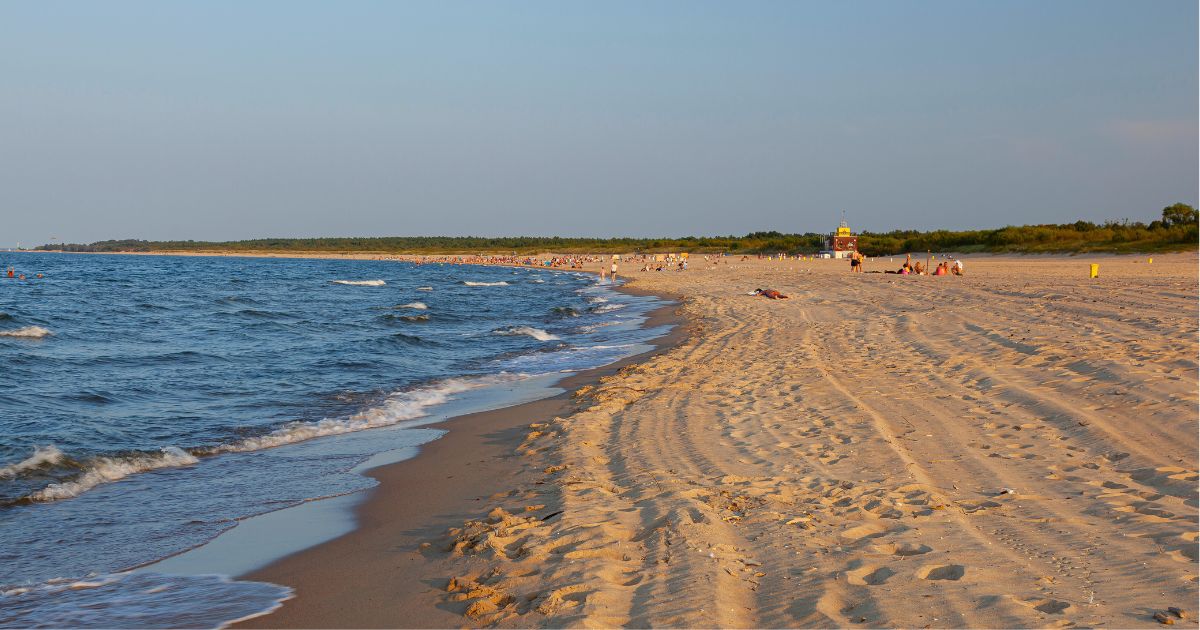
Stogi Beach
This sandy beach is located away from the main tourist hustle and bustle, next to an industrial zone with a container terminal. Precisely because of its more secluded location, it offers more peace and cleaner water. The facilities are more modest, but you’ll have more space to yourself. In one part, you’ll also find an unofficial nudist beach. You can get to the beach by tram no. 9 (the journey takes approx. 30 minutes).
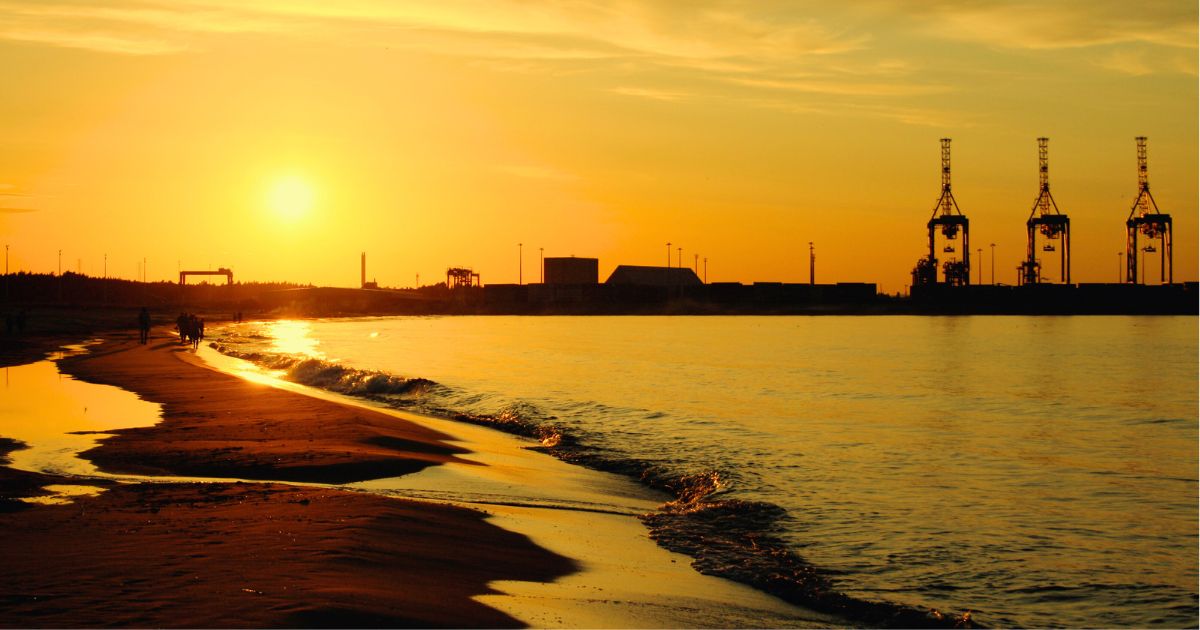
Jelitkowo Beach
A popular beach adjacent to Brzeźno, offering full facilities including changing rooms and refreshments. The beach is wide and sandy, with a gentle entry into the water. In summer, it’s a popular spot for swimming and sunbathing. You can get here by tram no. 2, 6, or 8, by riding to the final stop.
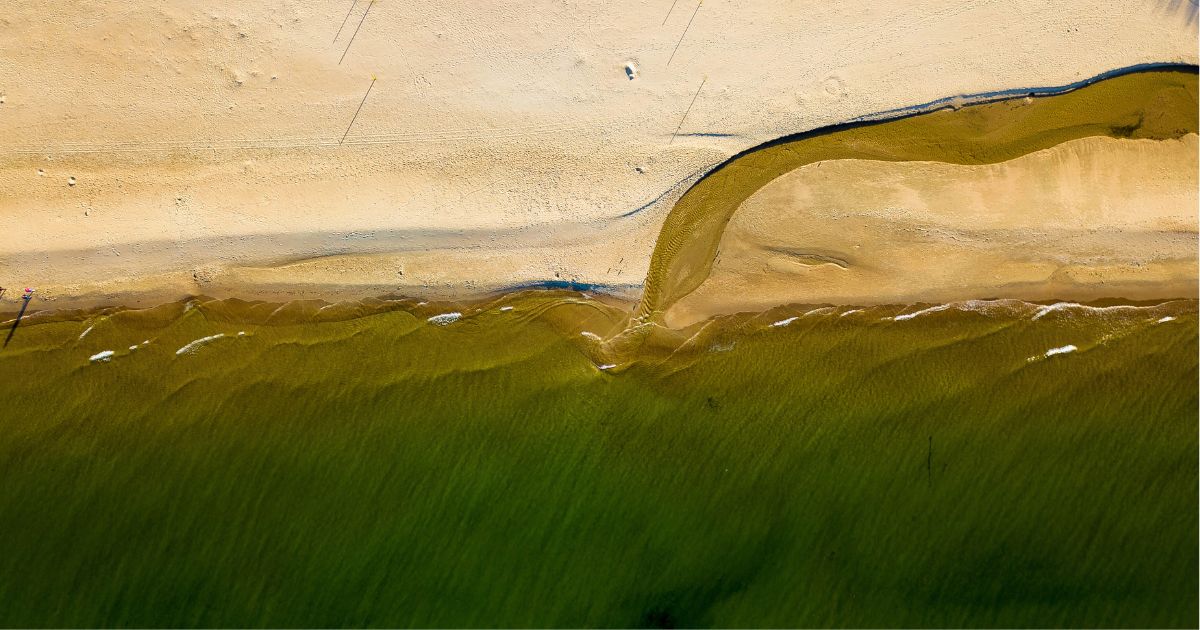
Brzeźno Pier
This wooden pier is a pleasant place for a walk and offers beautiful views of the bay and the city. It is particularly popular for romantic sunsets. The pier is not as long as the one in neighboring Sopot, but it is less crowded with tourists and has its own unique charm.
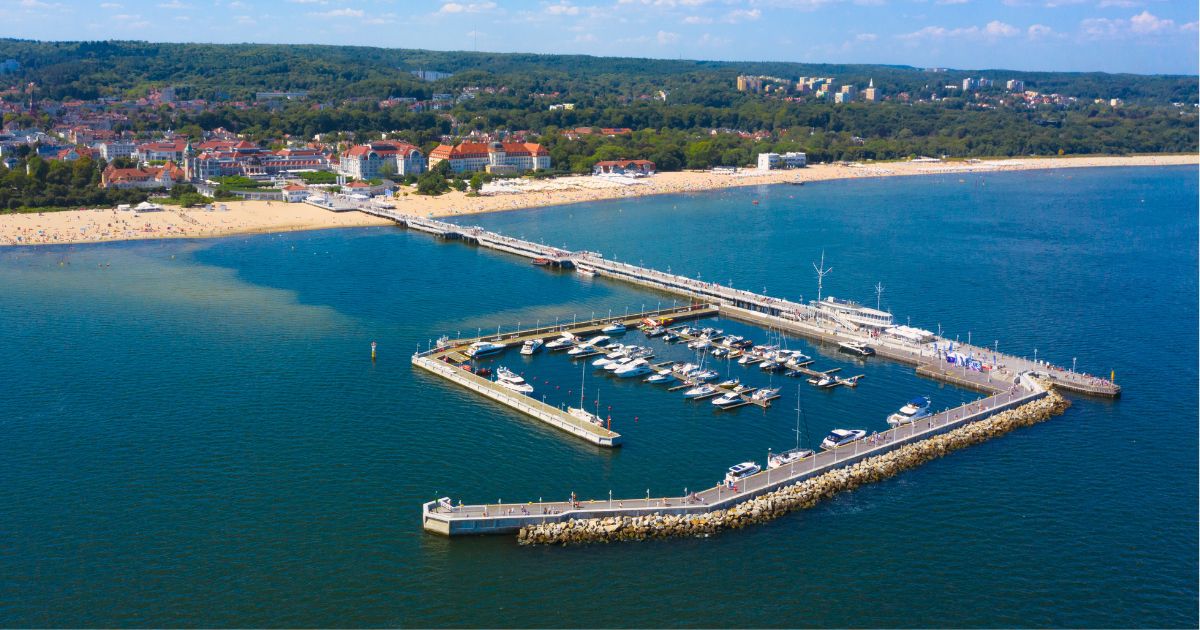
AmberSky
A Ferris wheel that provides panoramic views of the city and Gdańsk Bay. It is located on Ołowianka Island and reaches a height of 50 meters. From the cabins, you can see all the important city landmarks and, in clear weather, even the more distant surroundings, including the coastline. It’s a popular attraction, especially for families with children.
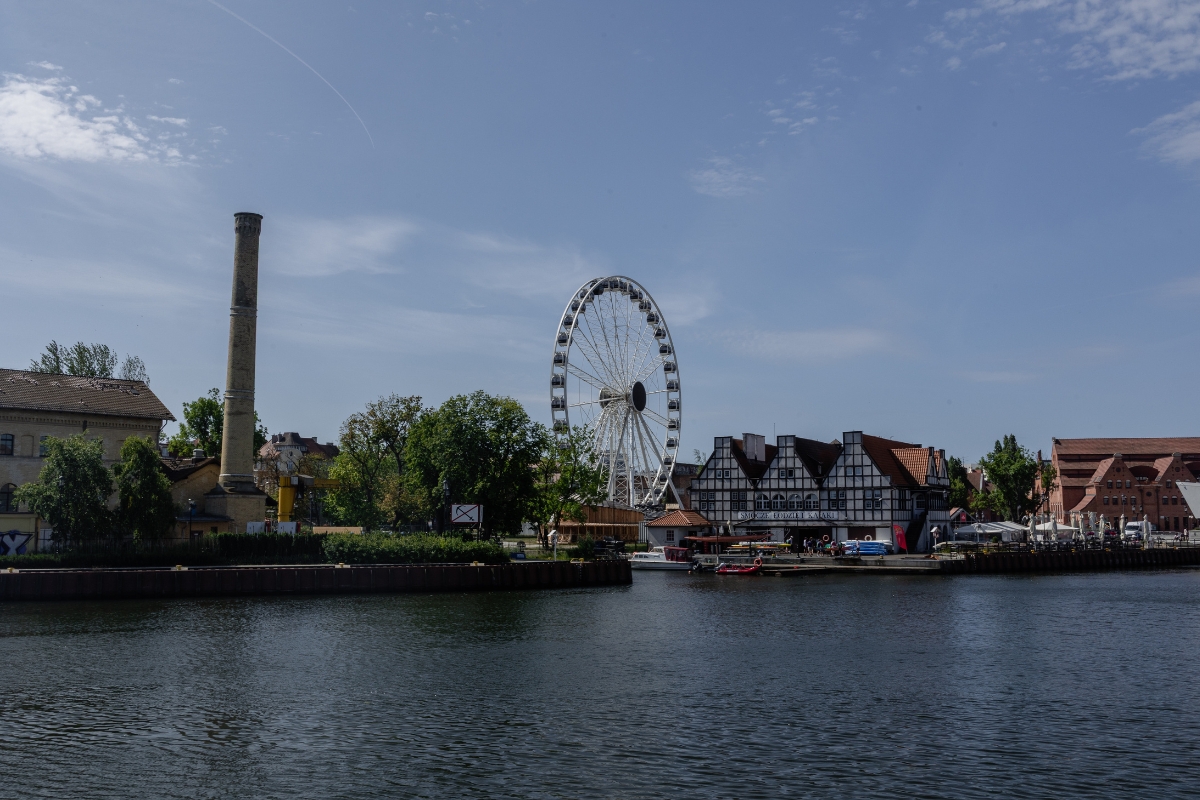
Hala Targowa
A historic market hall from 1896, where you can buy fresh food, local specialties, and handicrafts. It’s a great place to taste traditional Polish delicacies and buy souvenirs. The building itself is an interesting architectural work from the late 19th century.
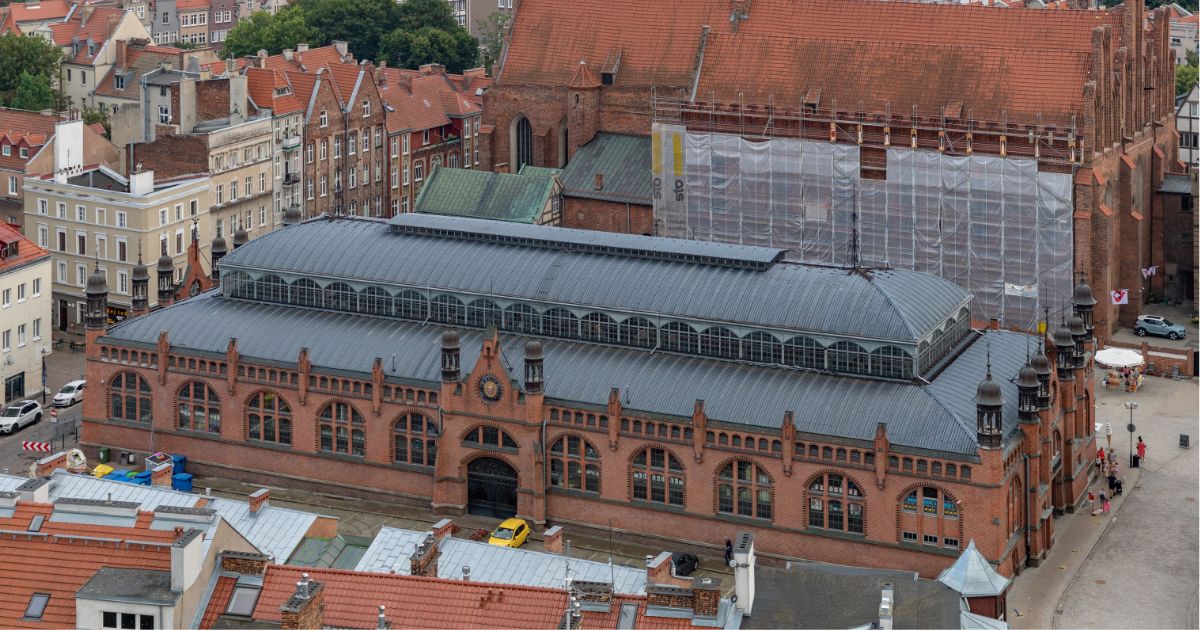
Amber Museum
A museum dedicated to amber, for which the Gdańsk and Baltic Sea region is famous. Located in the historic building of a former prison, it offers insight into the history, processing, and significance of this fossilized resin. Here you can admire not only raw pieces of amber but also artworks created from it.
Carousel for Children
If you have younger children and are worried they won’t enjoy Gdańsk, be sure to include some children’s attractions in your itinerary, such as this carousel.
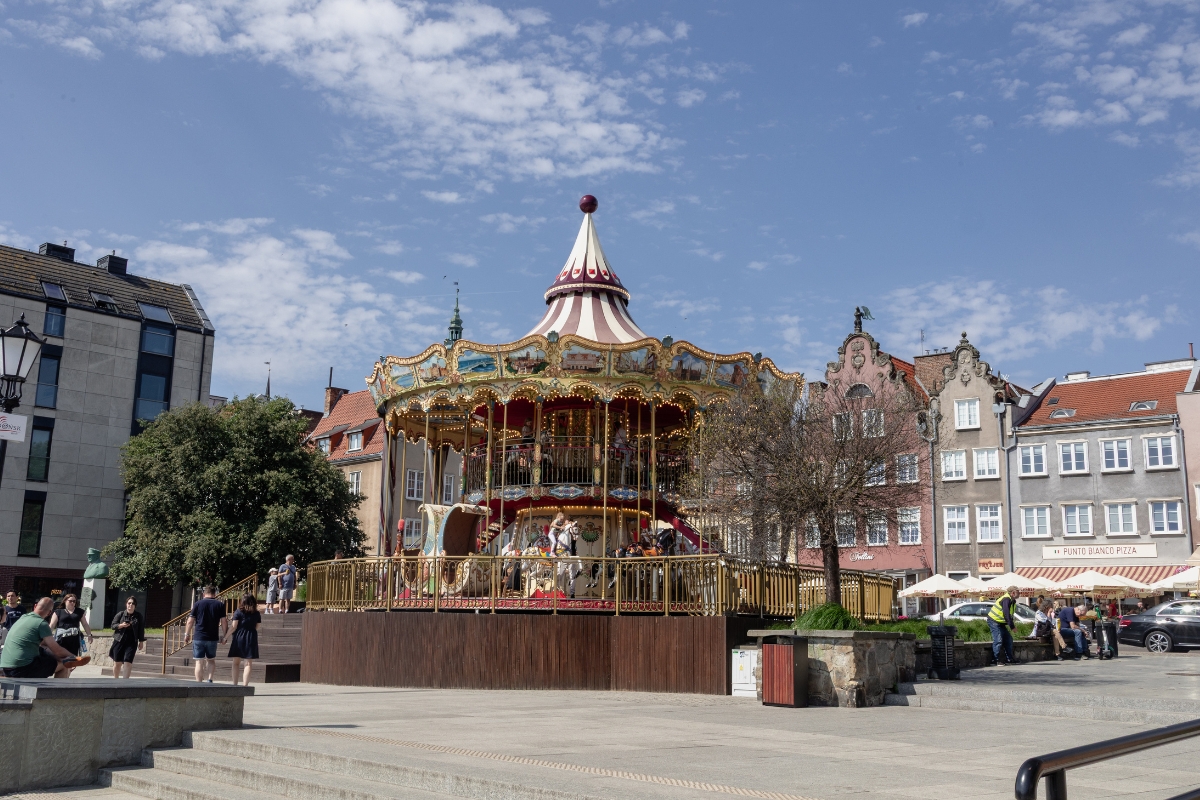
Great Mill
A 14th-century brick building that once served as the largest industrial mill in medieval Europe. It was built by the Teutonic Knights and supplied the city with flour for over 500 years. Although it has undergone many reconstructions, it has retained its original character and now houses a shopping center.
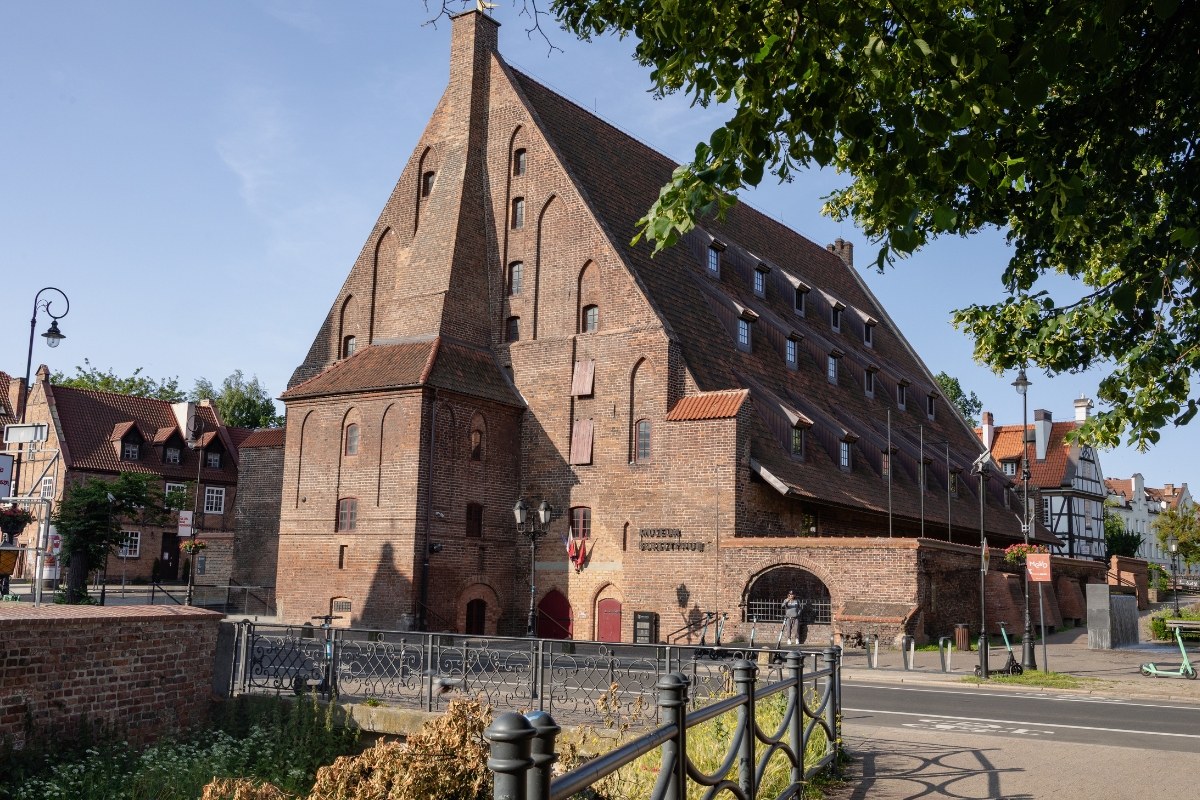
Polish Baltic Philharmonic of Frédéric Chopin
A significant cultural institution housed in the historic building of a former power plant on Ołowianka Island. The Philharmonic regularly hosts classical music concerts and is home to an excellent symphony orchestra. The building itself is an interesting example of converting an industrial space into a cultural center.

Monument to the Fallen Shipyard Workers
An impressive monument commemorating the workers who died during the suppression of strikes in December 1970. It consists of three crosses with anchors and reaches a height of 42 meters. It is located at the entrance to the Gdańsk shipyards and symbolizes the struggle of Polish workers for freedom and better living conditions.
Day Trip from Gdańsk: Malbork Castle
Just an hour’s drive from Gdańsk, the impressive Malbork Castle awaits you – the largest brick building in the world (which is, of course, also on the UNESCO list) and one of the largest fortresses ever, whose history is closely linked to Czech history.
It was here that the Grand Master of the Teutonic Knights relocated, and it was from here that in the 15th century, the Czech captain Oldřich Červenka sold the castle to the Polish king.
If you arrived in Gdańsk by train, you can take a trip via GetYourGuide.
Trip to Sopot
Although not directly in Gdańsk, the spa town of Sopot is only a 20-minute train ride away and is worth a visit. Here you will find the famous wooden pier (the longest in Europe), beautiful sandy beaches, and the famous “Crooked House” (Krzywy Domek), which is one of the most photographed buildings in Poland. Sopot is also known for its nightlife with many bars and clubs.
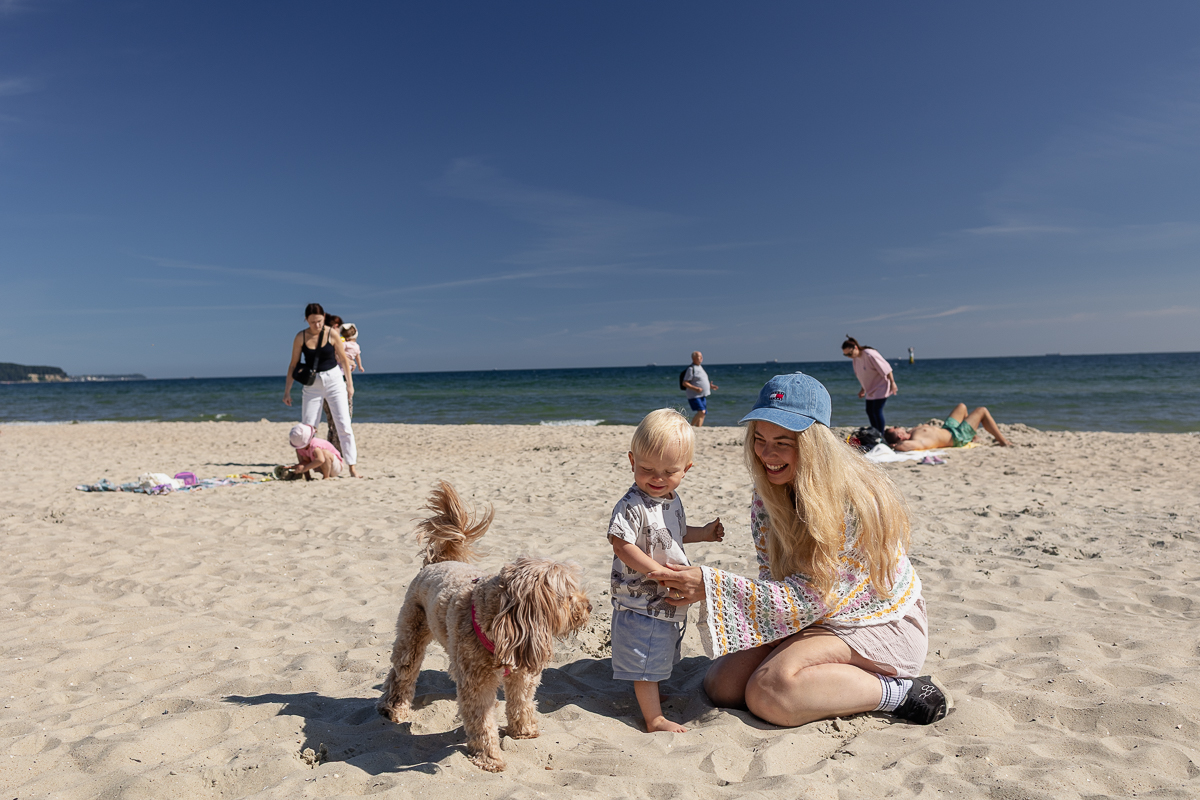
Frequently Asked Questions
What to do with children in Gdańsk?
Take them to AmberSky and the carousel in Gdańsk.
What to taste in Gdańsk?
In Gdańsk, you should taste traditional herring, fresh seafood, pierogi with various fillings, hearty bigos, sour żurek, the local specialty Gdańsk marzipan, and the unique Goldwasser liqueur with gold flakes.
How to get around Gdańsk?
Most places can be walked, or public transport works well here, and scooters can be rented everywhere.
What is the sea like in Gdańsk?
The sea is cold, but the beach has beautiful white sand and is clean. It is often quite windy.
How to get from Gdańsk to Hel Peninsula?
You can get to Hel by ferry from Gdańsk, or by car via Władysławowo.
Tips and Tricks for Your Vacation
Don’t Overpay for Flights
Search for flights on Kayak. It’s our favorite search engine because it scans the websites of all airlines and always finds the cheapest connection.
Book Your Accommodation Smartly
The best experiences we’ve had when looking for accommodation (from Alaska to Morocco) are with Booking.com, where hotels, apartments, and entire houses are usually the cheapest and most widely available.
Don’t Forget Travel Insurance
Good travel insurance will protect you against illness, accidents, theft, or flight cancellations. We’ve had a few hospital visits abroad, so we know how important it is to have proper insurance arranged.
Where we insure ourselves: SafetyWing (best for everyone) and TrueTraveller (for extra-long trips).
Why don’t we recommend any Czech insurance company? Because they have too many restrictions. They set limits on the number of days abroad, travel insurance via a credit card often requires you to pay medical expenses only with that card, and they frequently limit the number of returns to the Czech Republic.
Find the Best Experiences
Get Your Guide is a huge online marketplace where you can book guided walks, trips, skip-the-line tickets, tours, and much more. We always find some extra fun there!
